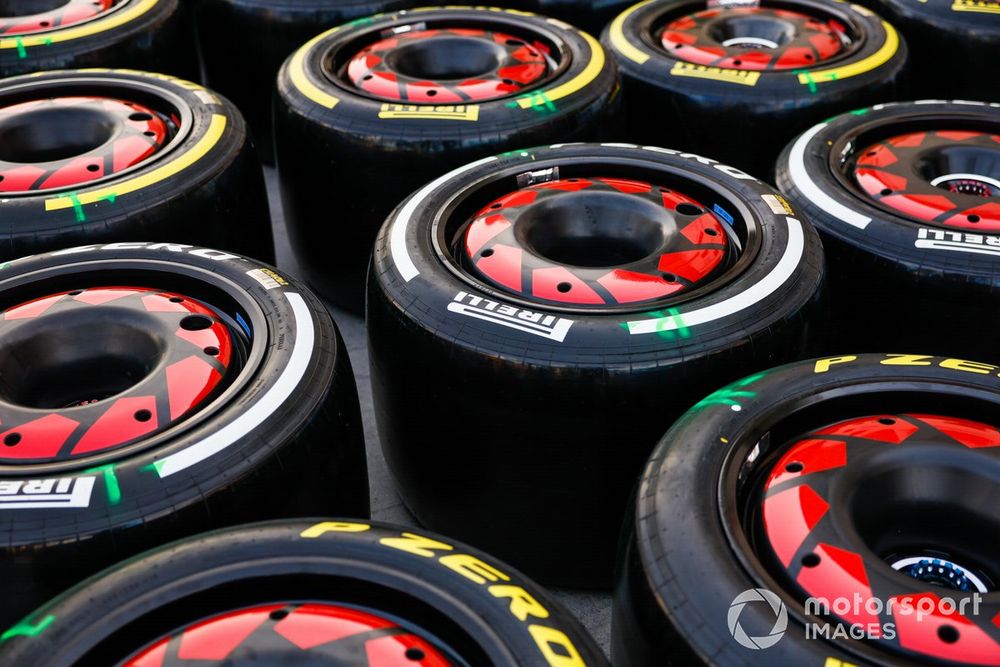With drivers forced to use the hard (Q1), medium (Q2) and soft (Q3) compounds in the three sessions on Saturday, rather than having complete free choice, it could serve to shake things up in terms of the fight for grid positions.
However, perhaps the biggest impact of the way the new tyre experiment works may be felt on Sunday, as it could produce an interesting case study about one way of making the racing more exciting in F1.
In a season where the spectacle has suffered from predictable one-stop strategies, the trial could actually help open the door for two-stops to be back on the table in the future.
Improving the show
The reasons for the racing not being as good this year as it has been in the past are wide and varied, and there is no single factor that has caused it.
The increased outwash of the cars, the ramping up of downforce being generated, the bigger difficulty in overtaking, and shorter DRS zones, plus the preference for one-stop races, have all whipped up a perfect storm in a season where one team is totally dominant.
With car designs pretty set for the season, the only variability throughout the campaign that could shake things up from now on are Pirelli’s tyre compound choices – as the softer the rubber the more chance there is of multi-stop races.
However, Pirelli also has to be careful in not pushing things too extreme and turning grands prix in to three or four-stop races, which equally can be unpopular because they end up being chaotic affairs that are quite hard for fans to follow.
Pirelli tyres
Photo by: Zak Mauger / Motorsport Images
Also, tyres that degrade too fast prove to be unpopular with drivers and teams as they force them to take things too easy, rather than feeling that they can push hard on more consistent rubber.
What has always been difficult, though, is pushing teams towards a two-stop strategy rather than automatically favouring the one-stop.
Time loss in the pits, the risks of getting dropped into traffic when overtaking is difficult, and not having enough of the right compounds available, are all factors that contribute to teams taking the conservative route.
Pirelli’s head of car racing Mario Isola says that turning races into two-stop strategy affairs goes far beyond just making tyres degrade more.
And there is almost a chicken and egg scenario where it comes to a lack of overtaking and boring strategies, as it is hard to decipher which comes first to trigger the…
Click Here to Read the Full Original Article at Motorsport.com – Formula 1 – Stories…

